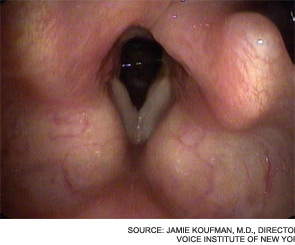Does young age adversely affect prognosis for oral squamous cell carcinoma? Background: Squamous cell carcinoma in young patients (<40 years of age) is believed to have an etiology that is distinct […]
More of the Same: Why isn’t otolaryngology becoming more diverse?
As America grows and evolves, its face necessarily changes. Our country rests solidly on the idea that life, liberty and the pursuit of happiness should be available to all. Our collective understanding that access to health care and healthy living are essential to that ideal happiness continues to mature. But while the population becomes more diverse and blended, cultural disparities in health care not only persist, they do not appear to be diminishing. Collectively, African-Americans, Hispanic Americans and Native Americans comprise over one-quarter of our population. Yet, in the year 2000, they made up less than 10 percent of the physician workforce. These numbers dwindle even more when we consider surgical subspecialties.

Your Practice, Your Brand: Top 3 marketing strategies
It’s a common challenge: In a tough economy, do you spend to increase patient revenue or save to keep your practice afloat?

Generation Gap: Combating “fogeyphobia” in the workplace
In an address to the 2009 Combined Otolaryngological Spring Meetings in Las Vegas, neurosurgeon Harry Van Loveren, MD, chair of the department of neurosurgery at the University of South Florida, coined the term “fogeyphobia” to describe a tendency among older doctors to become reluctant to speak out against new surgical tools and techniques, out of fear of being viewed as old-fashioned.

Payment Limbo: Medical societies take on SGR reform
In June, Congress gave physicians relief from the scheduled 21 percent Medicare pay cut, but only until the end of November. The payment patch, which briefly increases reimbursement by 2.2 percent, leaves doctors in limbo.

Progress in Chronic Laryngitis: Improvement in diagnosis but continuing debate
Chronic laryngitis is a multifactorial disease with a large differential diagnosis for the patient who presents with hoarseness. Fortunately, the diagnosis of inflamed larynx has improved in recent years.

The Opt-Outs: Otolaryngologists extol the benefits of third-party independence
When describing to the curious the benefits of opting out of both Medicare and private insurance, Gerard J. Gianoli, MD, president of The Ear and Balance Institute in Baton Rouge, La., often recalls one particular example: During one 90-day global period about five years ago, after an eight-hour resection of a skull-based glomus tumor, post-operative ICU care and several days of inpatient care and the usual post-operative office visits, he received a total reimbursement of $500.
Is Comprehensive ASNHL Screening Always Needed?
What are the costs and diagnostic yield of screening patients presenting with asymmetrical sensorineural hearing loss (ASNHL)? Background: The magnitude of workup on a patient with ASNHL of an uncertain onset […]
The Application of Posterior Hyoid Space to the Sistrunk Procedure
If the recurrence of thyroglossal duct cysts (TGDC) occurs as a consequence of incomplete resection, will the application of the posterior hyoid space (PHS) to the Sistrunk procedure minimize the […]
Robotic Surgery Offers Advantages for Infratemporal Fossa
Does robotic surgery provide better access to the infratemporal fossa (ITF), and is suprahyoid port placement an option? Background: Recent experimentation with robotic-assisted surgery has shown applications in head and neck […]
- « Previous Page
- 1
- …
- 273
- 274
- 275
- 276
- 277
- …
- 328
- Next Page »